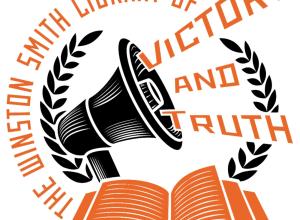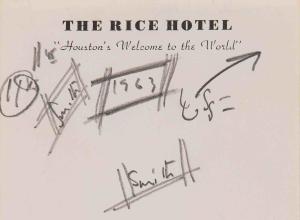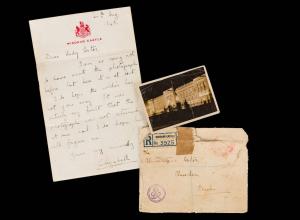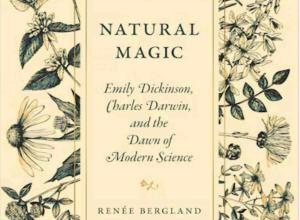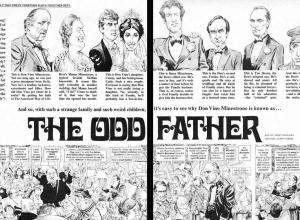Steven Raab on the Great Autograph Dealers

Steven chose an early Civil War-era eagle to form the inspiration for the Raab Eagle, which remains the firm’s logo today.
I entered the autograph field in 1985, a complete novice. The lay of the land was much different than it is today. It was indeed the heyday of the great autograph dealers, and boy did they have staggering inventories. So much was available then. And these they would offer the public in in-depth printed catalogs, up to a dozen per dealer per year. Someone’s catalog or other would arrive almost every day by mail. The challenge was often to select from all the available options.
My law office in Philadelphia was – quite coincidentally – next door to the well-known autograph dealer Catherine Barnes. One day in 1985 I went up to her office, and she showed me things I hadn’t realized existed. Like a real letter signed by Albert Einstein. Her inventory was wide ranging, and she was knowledgeable and reliable. I soon became a customer. In time I got to know her well, and in the 1990s we worked together to found the Professional Autograph Dealers Association (PADA). Catherine retired years ago.
Then there was Mary Benjamin, whose father had essentially invented the hobby in the 1880s. When I last spoke with Mary she was in her late 80s and had been in the field for 60-odd years. She was still on the ball. I sent her a book on the Benjamin family, and in return, she gifted me an autograph. She died in the 1990s, and her business later closed down.
Then there was Robert Batchelder. Bob was the first dealer I visited after Catherine Barnes. My wife and I had decided to make a modest $5,000 (about $11,000 in today’s money) investment in autographs. This would prove to be seed money for The Raab Collection. We bought our first autographs from him – a Thomas Jefferson free frank, a letter of Arthur Conan Doyle about his fictional detective Sherlock Holmes, and a document signed by John Hancock as President of the Continental Congress. To illustrate for you the depth of his inventory, when I visited him once to look for an Abraham Lincoln signed military commission, he laid out seven of them. I chose one based on condition. From Bob I bought the original letter of Theodore Roosevelt saying “Speak softly and carry a big stick.” It’s Bob that told me as I entered the role of dealer, “This is a grrrrreat business.” Bob passed away years ago.
Then there was Joe Rubinfine. In the field from the 1960 on, he was the great authority on early American autographs. Many were the times I consulted with him to get the benefit of his experience. To know Joe was to respect him; he was the authority. One day I was looking through his catalog and saw John Brown’s will – really the original will of the abolition leader. I bought it immediately. Joe, formerly a resident of New Jersey, moved to Palm Beach and had an office there. He was an avid runner. Joe died in 2019.
Paul Richards loomed large in the field back then, too. His catalogs carried hundreds of pieces and covered many areas of interest. He might have a letter of Abraham Lincoln followed by a signed photo of Babe Ruth. Located in New England, he had an affinity for 17th-century documents. I recall buying a document signed by William Hathorne from him; Hathorne was a prominent judge in the Salem Witch Trials and an ancestor of novelist Nathaniel Hawthorne. Paul died in the 1990s.
B. Altman’s department store in New York City had an autograph department – imagine that! The man who ran it and later became an independent dealer was Robert Tollett. He had impeccable taste, and his inventory had real breadth, atypically including all aspects of the arts and sciences in addition to history. I came to know Bob pretty well, and one day sitting in his living room buying an Oscar Wilde letter, I told him that his ad had gotten me interested in autographs while in college, and he had made a difference in my life. He was touched, and I well recall the moment. Bob died in 2001.
There were many other dealers as well. Jefferson Rarities headed by Jim Blanchard had just issued an amazing catalog. I was admiring it when my own catalog 2 came out in May 1990. My phone rings, and it’s Blanchard. He placed our first large order and encouraged me. “You’re on to something. Keep doing it.” This was valuable encouragement when I needed it most. Another person who gave me encouragement was David Holmes, who specialized in literary autographs. He was knowledgeable and professional. I worked with him closely when, in the 1990s, we worked to found PADA. Both Jim and David died years ago. Late in his storied career, I knew Charles Hamilton, a dealer who wrote many books on autographs. He died in 1996.
The plethora of fine dealers in those days led to what seemed to be an unending supply of very good material. Today if you are looking for a Lincoln letter, you may find that one or two experienced dealers have one of real quality. Back then, you might find a dozen dealers with one (or more) and you could take your choice. Availability of good autographs then puts in stark relief today’s situation where good things are harder to come by. Nor do many dealers today issue printed catalogs; it’s almost all on the internet.
Every one of these dealers had the knowledge to authenticate autographs themselves and would have laughed at the idea of someone on the outside having to be hired to do authentications and issue so-called certificates of authenticity. In fact, until late in the game there were no third-party authenticators.
How did the great dealers find customers? It involved attending autograph shows to meet colleagues and potential customers, running extensive and expensive ads in a variety of publications, slowly building a clientele so that word-of-mouth recommendations would come your way, and hitting the road to visit the offices of dealers around the country to see what they had. All of this took time and capital. The barriers to entry as an autograph dealer were very high. I often attended and exhibited at autograph shows, ran print ads, and joined organizations. Now it’s all on the internet, and that’s where you find your customers. Anyone and everyone has instant access to the marketplace–there are no similar barriers to entry, and all you need is a website.
This is the second of two guest posts by attorney, author, and collector Steven Raab, founder of The Raab Collection which marks its 35th anniversary this year. The first one is Steven Raab on Founding a Historical Documents Business 35 Years Ago







